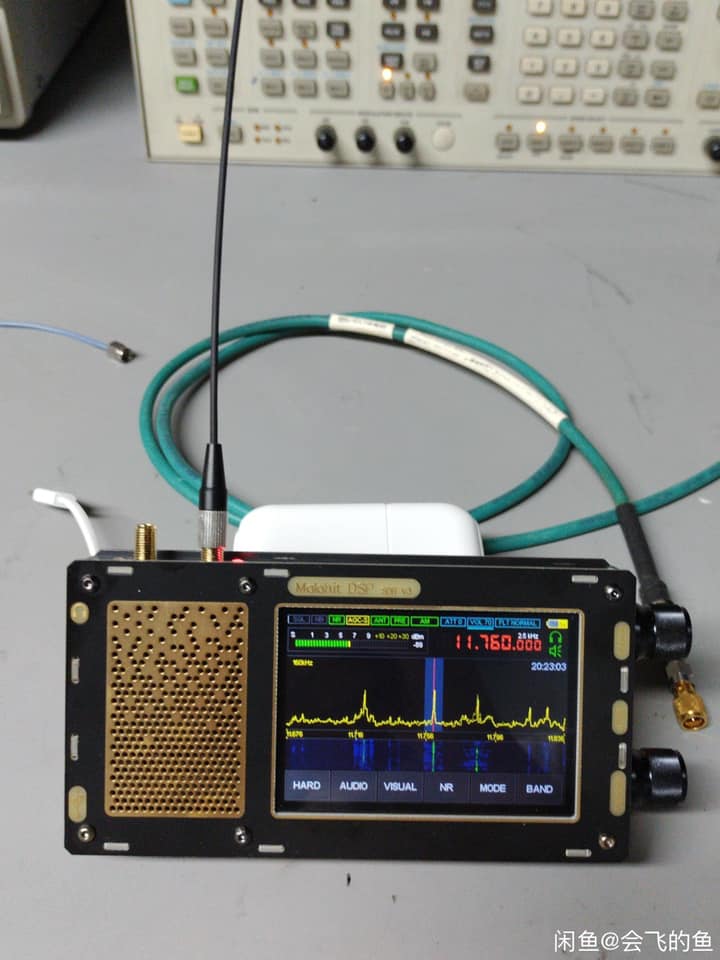 Many thanks to SWLing Post contributor, Dan Robinson, for the following guest post:
Many thanks to SWLing Post contributor, Dan Robinson, for the following guest post:
Malahit 2 versus Chinese Clone: Taking the Gloves Off
New DDC (Direct Digital Conversion) Version in Development
by Dan Robinson
It’s been a few weeks since my last commentary on the Malahit/Malachite, which as of this writing remains at the DSP-2 level, though there are continuing hints from the Malahiteam in Russia about future changes, including a DDC version.
All of the observations I made in previous articles are unchanged. As of today in mid-September, the latest test firmware version posted by the Malahiteam remains M2_FW2_10D. This includes a widening of the waterfall bandwidth from 160 kHz to 192 kHz. See my previous articles for more information.
Recently, I obtained a Chinese clone, one which will be familiar to anyone who has taken a dive into the clone market. This one is by HFDY and is immediately recognizable for its front speaker and longer slim rectangular form factor.
The HFDY (Malahit SDR V 3) has two high quality black metal encoder knobs on the right, with a large power button between, and USB-C and a headphone jack on the left side. On the bottom are two OFF/ON slide switches, one marked for 3.3 volts and the other BOOT(O).
I initially saw photos of this SDR some months ago and was curious but cautious. In recent weeks I decided to take the plunge and ordered one from AliExpress. It took just under one month to arrive, well-wrapped in bubble wrap in a plain cardboard box.
But the radio comes with a really nice black carrying case (see photo above) with a long white USB-C cable, a metal stand to prop the radio up on a desktop, and a flexible SMA antenna – really impressive in terms of what you get for $183. In contrast, the Russian-made Malahit comes only with a metal whip antenna.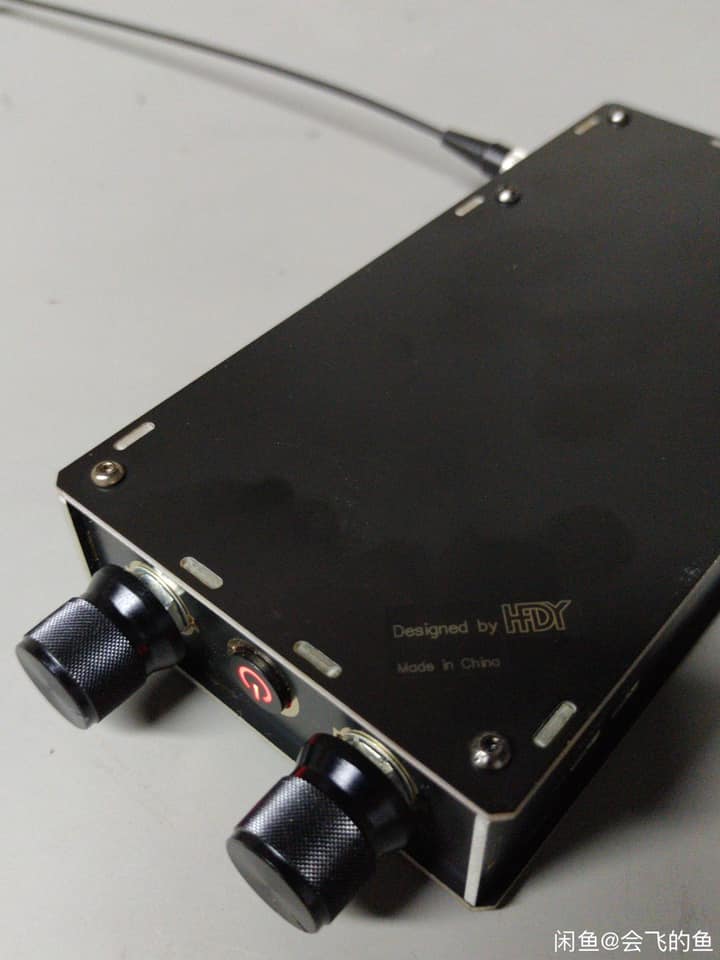
When I first took the MSDR V3 in hand, I was impressed. This is a really nicely-built receiver – high quality metal construction that conveys an immediate feeling of attention to detail.
Also included is a sheet of paper with handwritten sensitivity and blocking figures – the sheet has the Malahiteam name on it, though I am unsure what the arrangement is between the Chinese maker and the Russia-based team in terms of this kind of information being part of the package.
When I originally ordered the M SDR V3 I assumed incorrectly that I would be getting the equivalent of a DSP-2. This was not the case: the Chinese clone is a DSP-1, and had 1.10b firmware rather than the last 1.10c FW.
This necessitated using STM32Cube PC program to update to 1.10c and I had a bit of a problem doing this since the Chinese maker does not include any specific instructions similar to those provided by Malahiteam for its DSP-1/2 receivers.
After gathering a bit of information from another owner of the Chinese clone, on the Malahit Telegram group, I felt confident enough to proceed and eventually was able to make the upgrade to 1.10c, which in my view brings the Chinese clone up to essentially the same level as a DSP-2 with 2.10D firmware.
HFDY Clone Wins On Quality of Construction
 With this brief history out of the way, here are some key points as I see them, between the Russian-made Malahit DSP-2 and the HFDY China-made clone:
With this brief history out of the way, here are some key points as I see them, between the Russian-made Malahit DSP-2 and the HFDY China-made clone:
- The front-firing speaker on the HFDY is a home run. The speaker has a beautiful gold color metal grille and audio from it is an improvement over the DSP-2 with its rear firing speaker.
- Where the DSP-2 comes with two plastic encoder knobs, the HDFY has two really nice heavy metal knobs on the right side. Owners of the DSP-2 know that the original plastic knobs on the DSP-2 can be easily replaced by higher quality knobs made by Nikolay in Asha, Russia ([email protected]). But the fact that the China-made clone doesn’t require this is a plus.

- On performance – the fact that the HFDY V3 has two antenna jacks is a major plus. Each of these jacks by the way has a LED next to it that shows whether that particular antenna is being used, either 50 ohm or Hi-Z. So, while the Russia-made DSP-2 requires constantly switching antennas to be able to hear AM, or FM, on the HDFY antennas for both can remain connected simultaneously.
- As seen in the photo (below) of the HFDY, the receiver has some impressive internal shielding, something that is not seen on the Russia-made DSP units.
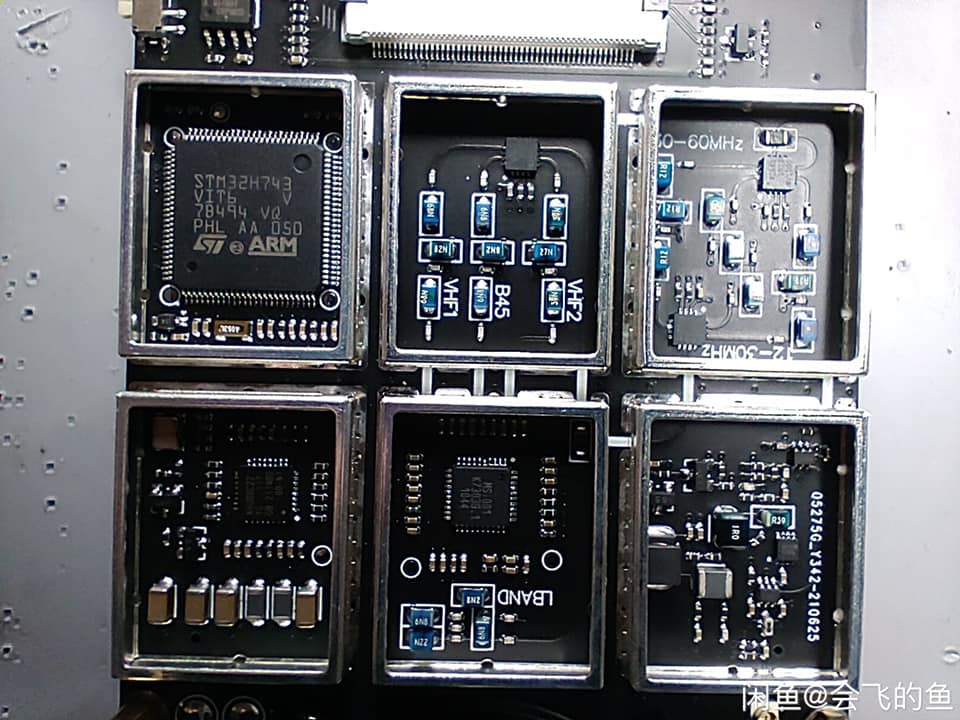 On battery duration – the HFDY V3 uses a flat Li-Ion cell, rated at 3300 mAh and according to BBW-Tech Store, the seller on AliExpress, the size is 35 × 70 × 80. According to the seller, as high as a 8,000 mAh can be used though I have not confirmed this capacity would be available in the size specified by the seller.
On battery duration – the HFDY V3 uses a flat Li-Ion cell, rated at 3300 mAh and according to BBW-Tech Store, the seller on AliExpress, the size is 35 × 70 × 80. According to the seller, as high as a 8,000 mAh can be used though I have not confirmed this capacity would be available in the size specified by the seller.
I have not yet opened the cabinet of the HFDY V3 but the China seller that provided my unit sent the photo above showing the flat cell lithium battery.
A side note: according to BBW-Tech Store, the switches at the bottom of the receiver are “used to write firmware from the factory and will not be used in the future” adding that “you do not need to use [these]….” This does not explain the decision to make these switches visible and accessible on the bottom of the receiver cabinet.
1.10c Firmware on Chinese Clone Fully Adequate But Grounding Needed
On performance, in my view the 1.10c firmware gives the HFDY clone most of the features that are important in comparison with the Russia-made DSP-2. Selectable synchronous detection is present as are all of the important features such as the superb noise reduction (NR) and the FCORRECT to correct for frequency variation.
Using the HFDY V3 on a You Loop antenna, I see no major differences with the DSP-2. Unfortunately, this includes the fact that any of these receivers exhibit sensitivity to touch – signal level increases significantly when holding the cabinet in your hand with the telescopic antenna.
The observation about touch sensitivity deserves more attention because in comments I have seen on Facebook and in the Telegram group discussion, many users continue to struggle with an essential fact.
Unless the receiver is grounded, whether by holding it in your hand or with some additional length of wire attached to the cabinet, the Malahit is not going to do much more for you than a portable shortwave receiver such as those in the Tecsun line or older classic portables.
Obviously, for those whose listening is more focused on frequencies above 30 MHz, my apologies – in this case obviously the DSP-2 with range up to 2 GHz is a wonderful tool that provides access to air and other communications in those higher ranges.
A comment in August by a member of the Malahit Facebook group underscored what I have been talking about. A user reported that while using a Tecsun PL-660 he was hearing clearly a LSB signal, though with some noise, on 3,916 kHz:
“I decided to see if the DSP2 could pick up the same signal, in the same room of my house…the DSP2 did not pick up the signal, only noise. It was right next to the PL-660 using a Diamond SRH 789 antenna. Attaching a reel to the antenna did not help, the unit still failed to pickup the same signal (which again, while weak, was clear on the PL-660).”
“I decided to take the DSP2 outside, and eventually was able to pickup the same signal in a very specific location with the antenna pointed in a very specific direction. I’m sure there are factors occurring here I am unaware of, but I was a bit let down [by] this. At first I thought the DSP2 might be off frequency and tried to fCorrect, but it was not the case since my outdoor test was normal. It has not had any issues getting reception on any other bands.”
“Just for the record, I love the DSP2 (other than the decision to not have internal BMS which makes absolutely no sense even though it is a kit radio). It fills a niche, and I realize it won’t be perfect nor compare to established radio hardware perfectly.”
There were 34+ comments, including mine in which I observed that Tecsun and similar portables are actually made for HF reception, though they obviously have FM and in the case of the XHDATA D-808, AIR band.
That really isn’t the case with the DSP-2 and similar units. Again, when using a telescopic antenna it’s often the case that listenable audio is obtained on actual shortwave portables though they lack the superb noise reduction of the Malahit and various other flexibilities.
Taking The Gloves Off
So, let’s take the gloves off, so to speak, when discussing performance of the Malahit receivers, whether the Russia-originated sets or Chinese clones. By this, I mean let’s take a hard look at where things stand. Again, I am talking primarily about performance on HF rather than higher frequencies.
There is not any major difference I can see between a Russia-made DSP-2 and the HFDY Chinese clone I received recently. Add to this the improved cabinet of the HFDY SDR V3 with heavier metal construction, high quality knobs, dual antenna jacks with LEDs, and a really nice front-firing speaker and you have a very impressive package.
The Russia-made DSP-2 is an ongoing work in progress. As seen in the various discussions online, Malahiteam continues to work on key issues such as reducing internally-generated noise and noise entering via the antenna input along with loss of time on the internal clock, the SMA connection to the PCB, and the above-mentioned absence of BMS (internal Battery Management System).
As I write this, Malahiteam is planning further refinements of the DSP-2 to include an apparently imminent additional firmware upgrade beyond the current 2.10d.
The bigger news is development of a DDC version of the receiver, which could be seen placed in a DSP-2 cabinet in this video posted on You Tube and showing its band scope range in this video. An even earlier video (from June) can be seen here.
In further discussion on this, Georgiy of Malahiteam said that this version may be available by the end of 2021. And discussing details on the Telegram group, some additional details were leaked:
- size like [M2 / DSP-2]
- reception from 100kHz to 30MHz, 88-108MHz, 144-148MHz (not ideal)
- MDS for SW with preamp -138dBm, without – 130dBm, on FM with preamp is -130dBm, on 144MHz with preamp is -124dBm
- BDR is 118dB, IMD3 is 90dB
- bandwidth now is 24, 48, 96, 192, 240, 384, 640, 768, 960, 1560, 1920kHz, 19MHz, 38MHz
- for PC is available all from 48 to 1920kHz and 38MHz (only with Quisk)
- planned optional board for VHF reception to 6GHz, not yet [fully designed]
- Cost: about 420 USD for base version, 480 USD with optional board
If something jumped out at you, you are not alone. An estimated cost of $420 is quite a price increase from the $200 or so of the current DSP-2, as many people observed in the Telegram discussion.
As I observed directly to Malahiteam, this kind of price increase may be a challenge for buyers, though perhaps not for those people who absolutely have to have the latest version of the receiver.
In a recent comment on You Tube, Georgiy was asked when the DDC version of the Malahit might be available. He responded that a test batch of the units would be available “in the near future” followed by mass production.
Among requests from Malahit users: inclusion of Bluetooth capability, and optical encoders. There has also been discussion of potential improved battery life in the DDC version.
It remains to be seen what sort of battery arrangement a DDC version of the Russia-made receiver will have. Malahiteam has been putting double 18650 battery trays in some DSP-2 units sent out in recent weeks.
The speed with which new firmware for the current DSP-2 gets integrated into China-manufactured clones remains to be seen. With the Chinese HFDY clone I have here, there appears to have been a considerable lag in 1.10c being put into clones on sale on AliExpress.
So, the major headline from all of this?
A new DDC version of the Russia-made receiver is likely in coming months. How quickly Chinese clone makers will integrate new technology into their receivers is a question.
In my opinion, from a structural design and appearance standpoint, the quality of the HFDY unit exceeds that of the Russia-made DSP-2. Whether we will ever see this in units manufactured in Russia remains to be seen.
Update (22 September, 2021): Click here to read update notes.

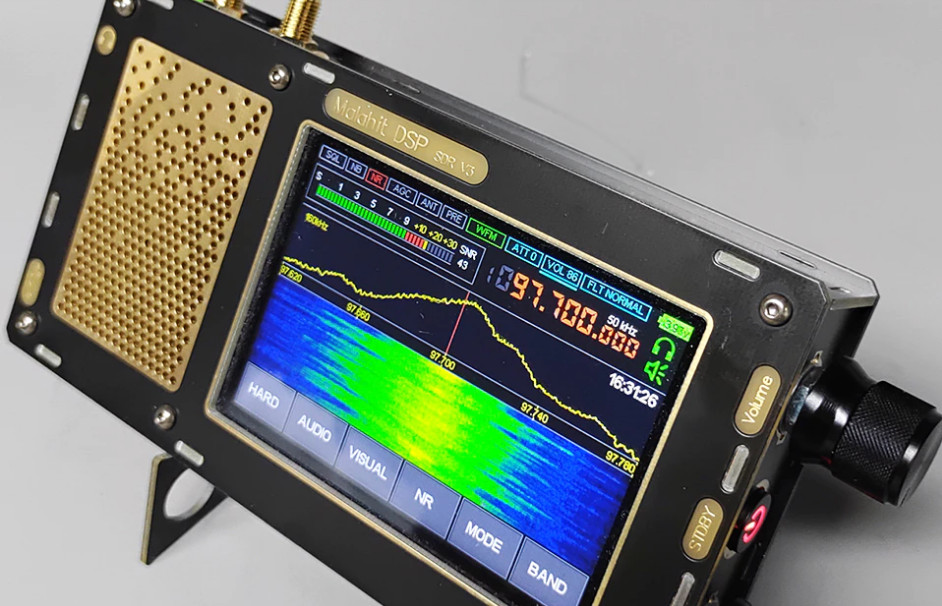
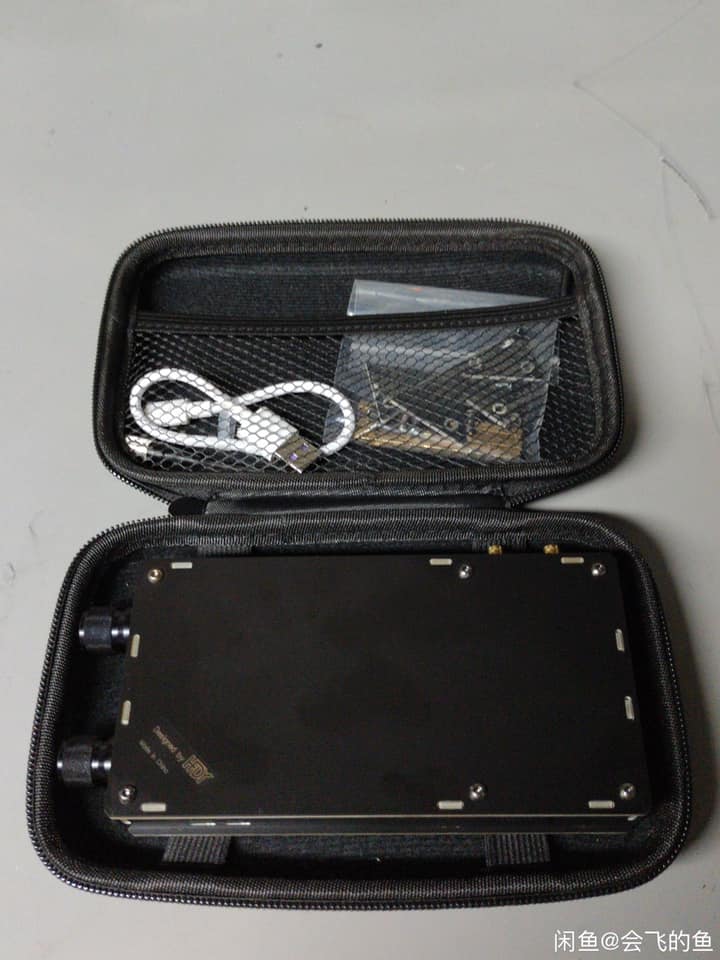
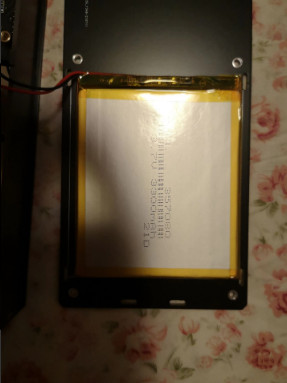
Thank you first of all for this very interesting article and thanks also to those who contributed with the posts.. I am entering the world of radios and I really have everything / a lot to learn.. suggestions, explanations and more are welcome…
I have decided to purchase the “HFDY V3” .. I really hope it arrives with the latest firmware because otherwise I would be in great difficulty.
Can anyone tell me if it is possible to download the user manual?
Thanks everyone again
I’m late to the party here but I purchased this radio from Amazon and it’s great and all but I seem to be missing the feature that lets me scan between my saved channels – is there a super secret squirrel way to access this scanning featurer?
The manual says there should be a “Monitor Setting” button on the “band” option but I only have 5 pages of memory blocks and no other options.
Grounding with a usb ‘dead plug’ will work for most LW/MW/SW radios without a dedicated ground.
Remove the far end of a usb connector, locate ground, expose this wire, connect to any earth via secondary connection (alligator clip).
Obviously this method is for handheld and other non-pc uses.
A second method is simply use the usb’s connection shield as a connection to a ground, however many radios isolate this from chassis, and at best will give an incomplete phantom ground, such as when a radio is touched.
Looks like a clone with a maybe a Russian key
HFDY Registered DSP2 2.20C 50K-2GHz Malahiteam SDR Receiver Radio DSP 3.5″ Touch LCD Russian Genuine Authorized HFDY $540.96
https://www.aliexpress.us/item/3256805181832406.html?spm=a2g0o.detail.0.0.2448v7xiv7xi99&gps-id=pcDetailTopMoreOtherSeller&scm=1007.40050.281175.0&scm_id=1007.40050.281175.0&scm-url=1007.40050.281175.0&pvid=c919a7e0-8859-4ff6-b52e-ebf2ec5337cc&_t=gps-id:pcDetailTopMoreOtherSeller,scm-url:1007.40050.281175.0,pvid:c919a7e0-8859-4ff6-b52e-ebf2ec5337cc,tpp_buckets:668%232846%238113%231998&pdp_npi=3%40dis%21USD%21588.0%21540.96%21%21%21%21%21%402103146c16897257255921723ea77a%2112000032764181653%21rec%21US%21958243546
Disculpe cual es el nombre del fabricante?
Anyone who has any answers..thanks in advance.
I got a HFDY version yesterday and so far I’m pleased, for the most part. I will be trying it out over the next couple of days, away from the QRM at work, and in my apartment.
I have a couple of questions:
1. How do you find out the firmware version? I looked for a long time and coudn’t find it. Strange, everything else I have pretty much has it come up on bootup. I bricked my version one trying to update the firmware to the official one, so I hope to avoid doing it for a while. Seems that updating is a real pain on most SDR’s. I’ve been trying to do it on my Afedri Lan-IQ and have gotten nowhere.
2. Is the firmware update needed to make the antenna switching work? So far, the LED lit up on the 50 Ohms jack, and that’s where it stays, the touchscreen changes to Hi-Z but nothing happens.
3. Is there an English V3/HFDY manual out there somewhere? I found an English V2 manual, but it’s badly done, IMHO.
And a couple of comments..
The volume encoder being above the tuning encoder is the opposite of every radio I’ve ever owned. Seems to be weird for weirdness sake. Audio is very good, considering the size of the receiver. And like a lot of cheaper items with (I’m assuming) cheap encoders, you turn the knob and maybe something happens. Or instead of changing something 3 notches it does only one or two.
1. I could not find that either but by using the unit, it appears to have the latest version.
2. You can switch to the Hi-Z port using the settings under hardware but only at certain frequencies.
3. I haven’t found one either. As time goes on, I am learning by trial and error how to use the radio.
Thanks for the reply.
1. I guess you’re correct about the firmware.
2. I didn’t realize that it was frequency dependent until I posted. Mine still seems to have some sort of issue where it takes a couple of tries to make it switch. The display shows one thing, and the lights show the true antenna picked.
3. Me too, the volume knob being on top is just backwards from any other radio I own and I constantly turn the volume up and down instead of tuning. I’m slowly getting used to it, but it was an odd choice to do it that way. Tuning step changing is a problem, I don’t know if it’s just my unit, but it takes a lot of turning the encoder to do anything.
The display noise on any whip antenna is pretty bad. Turning the display off solves that issue, but the display is the best thing it has going for it. On an external antenna, it’s not bad, and I was hearing a lot with just an old magnet mount CB antenna on my car. I notice that a local FM station is causing some problems too, so an FM trap might be something to look for. It’s “pretty close” to being great, if only the display interference could be rectified, it would be a really great little radio.
Some points are questionable:
1) Body material. In the clone, the case is not made of metal, but of fiberglass – a material for printed circuit boards. If the quality suits you, then okay. In the original receiver, the body is made of aluminum.
2) About knobs for encoders. Are the side handles convenient to use? In the original, we worked through this moment and decided not to do this, since it is corny that the thumb move with the lateral position of the handles does not allow you to turn at a large angle. Those. the adjustment speed will be low, even if you turn it very quickly.
3) What type of encoders are there? With or without clicks? How many impulses?
4) Front-facing speaker is good.
5) RF shielding is done well. The DSP2 also has RF shielding. And its effectiveness is determined not only by visual beauty. The most critical path of interference is direct airborne interference from the display to the antenna, here the shielding is absolutely forceless. The DSP2 noise level is algorithmically reduced.
6) About the antennas. Both the rubber clone antenna and the telescopic antenna of the original have about the same cost, in both cases they are short for HF. For normal HF reception, it is better to use longer antennas, about 1 meter long.
7) What is the advantage of having two antenna inputs? Connect two antennas at the same time? HiZ in malachite is optimized for short waves and if you have only one antenna, then when listening to HF you want to switch to VHF, then you need to switch the antenna. In addition, if you are listening to the receiver at home on an external antenna, then you may need to disconnect the HiZ antenna, because home interference will be accepted.
There is an important point – the simultaneous connection of two inputs to the internal circuit of the receiver only worsens the reception due to the fact that the resistance of the receiver will no longer be 50 Ohms. Because the alignment will be broken.
In original malachites, you do not need to switch anything forcibly – HiZ turns off automatically if the receiving frequency exceeds 30 MHz.
8) About the grounding of receivers and the influence of the body. This is primarily due to the fact that the receivers have a metal case. And by touching it, the body acts as an antenna. If you take any receiver in a plastic case and touch, for example, the terminals of the battery or any other part connected to the common wire, you will get the same antenna effect and this is normal. This is physics.
Regarding communication with Chinese manufacturers. Our team is not connected with them in any way. Copyright belongs only to our team and has not been delegated to anyone!
Some clone manufacturers buy keys from us. But this number is disproportionately less than the total number of clones sold.
I recently purchase the HFDY on the basis of its performance, price, and front-facing speaker. (How anyone can design a radio with the speaker pointing in the opposite direction to the listener is beyond me). I agree about the dual antenna connectors – that doesn’t make a huge deal of sense but it’s not a big deal. As for the case, it appears to be circuit board with a metal surface layer which explains the touch sensitivity.
Yes I realise that there are “cultural” styling differences between the Western World and the Far East and my comment was made purely from the point of, a dare I say, it a European user.
Pretty much antipodal to a Dieter Rams design. The black and gold color scheme gives it some steampunk touch living in dissonance with the playful modern-ish design elements and the touch screen. Probably not exactly a styling for the masses, but definitely a departure from the same old black boxes . 🙂 I’d buy the Lake Placid Blue/chrome version! Just because! 😀
I like the quality of the overall construction and the internal screening on the HFDY model but IMHO the external styling is “flashy” and what we in the UK would call “a dogs dinner” and doesn’t appeal to me at all.
The DSP2 is just about small enough to fit in a pocket, but I would struggle to do that with the HFDY.
Another point is the large chunk of the military air band missing on the HFDY.
No coverage from 250MHz to 400MHz so a nice big 150MHz wide black hole on the HFDY
The DSP2 only loses 20MHz from 380MHz to 400MHz
This is a good observation and one I have passed on to the China HFDY manufacturer…
While we in the western world like mute and calm, it’s the opposite in Asian countries like China, S-Korea or Japan. Loud and flashy is the thing, and that will also explain the design of this one, “Chinese style” to appeal to the local market.
“De gustibus non est disputandum”, tastes should not be discussed.
Although I may agree with your comment that styling is flashy, it still seems to appeal to others. So, I usually refrain from expressing my taste-related comments, and try to remember the old Latin phrase. I was introduced to it upon reading an excellent online radio text by Miomir Filipovic: https://www.mikroe.com/ebooks/radio-receivers-from-crystal-set-to-stereo/the-audion-direct-receiver-with-drain-detector
Regards.
Alibaba
US $162.30 20%OFF | New 1.10c Malachite radio Malahit DSP portable SDR receiver 50KHz-2GHz shortwave radio
https://a.aliexpress.com/_mKjgFob
How is having an SMA socket for a High-Z input an advantage?
Surely it would be better to have some form of screw terminal like in the SDRPlay series of SDRs, or a simple 4mm banana plug socket, for connecting a simple wire antenna?
Unless of course your idea of a High-Z antenna is limited to a simple telescopic whip?
A Very good point!
Where to get the HFDY version.